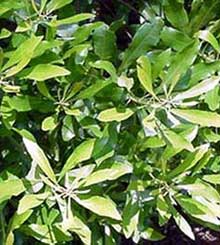 The holidays are, once again, a pleasant memory. The decorations are put back in the attic and the cookies have all been eaten. Just when we thought it was time to relax a new crop of catalogs started arriving.
The holidays are, once again, a pleasant memory. The decorations are put back in the attic and the cookies have all been eaten. Just when we thought it was time to relax a new crop of catalogs started arriving.
Seed and plant catalogs and lots of them! Pity the poor mail delivery person; just when they were due for a break it started again. My friend Sandra got six in just one day last week. Some companies are sending them electronically and even the e-mailbox is getting slammed. That means one thing; spring is not far off and not a day too soon for me, an admitted wuss where cold weather is concerned.
As I look at these gorgeous offerings of the latest and greatest plant material, I am being taken in by incredible pictures and descriptions of plants. I am dreaming of balmy days and turning moist soil in my imagination. Then the thermometer interrupts my reverie with reality. It is still cold outside. Pretty darn cold too; my wardrobe severely lacks appropriate outerwear for these short polar bursts. In the Lowcountry we deal with cold with layers. What works for people is good for plants also. Layers. When leaves fall from the trees in the forest, carpeting the ground with layers that insulate the soil against the cold, it’s the same principle as putting on that extra sweater.
We are anticipating one of those cold mornings as I write this. Did you ever wonder about the difference between frost and a freeze, and how it applies where our gardens are concerned? Skip Richter and Monte Nesbitt, both extension horticulturists in Texas, have written a paper with suggestions for protecting your landscape from frosts and freezes.
Many plants are genetically programmed to withstand cold temperatures, but if they have not had time to go into full dormancy even hardy plants can suffer. Recent temperatures, fluctuating between the 70s and the 20s, did not help prepare our plant material. The survival of our plants will be determined by their age, location, and overall health.
Freezes occur when there is a sudden drop in temperature, and are accompanied by wind. The harm is caused by the extremely low temperature, which affects the entire plant, and desiccating winds. Plant cells are primarily water, and when that water freezes the ice crystals destroy the cell walls and the moisture will leak out as the thaw occurs, killing the plant. You can expect brutal damage in plants that have fleshy leaves. Any flush new growth on shrubs and trees will be subject to severe harm also.
Frosts can be more complicated; they usually occur when the sky is clear and windless. During the day the plants absorb the heat from the sun’s rays and at night they radiate that heat back to the sky. On a clear night this process happens more quickly and the plant tissue cools rapidly. On a cloudy night this heat is actually reflected back to the earth keeping the plants warmer. However, on a cloudy day plants will absorb less heat and if the night is clear a rapid cooling will occur. Unlike a freeze, in which an entire plant is frozen, frost generally touches the exposed tops of plants and burns the leaves and branch tips. Frost that forms for only a few hours in the early morning may cause few problems but a prolonged frost may continue to cool to the freezing point. We have some control over this radiative frost; tree cover provides heat from escaping upward and cold from falling; the bulk of our homes retains heat and warms nearby plants; moisture captures heat energy and a large body of water can warm a significant area.
The strap-like leaves on bulbs like amaryllis and agapanthus will be damaged beyond help but the bulbs themselves should be fine. Tight buds on flowering shrubs like camellias and quince will not show any damage, although the open flowers will brown off. The blooming snowdrops will take this polar express in stride. Tender bedding plants such as begonias will be history but winter annuals like pansies will only hit a bump in the road and bounce back as the weather moderates. The important thing to remember now is to not cut anything back at this point. Let’s let nature take its course and see what survives and thrives or, sadly, wanes.
Things are looking a bit colorless outside today; I thought I would show you something bright to remind you of warmer weather. This is the Crape Myrtle ‘Comanche.’ When it comes to our gardens and the weather we can only help, with good placement, and hope. It is too cold to work outside; I’m going back to those catalogs. I have already picked out a new Osmanthus, ‘Apricot Echo’; this one starts blooming when only a few inches tall and the new leaves emerge a deep burgundy color. Got to have one!
Wishing everyone the happiest 2015. May your bountiful garden bloom and flourish.
Read more How Does Your Garden Grow?






